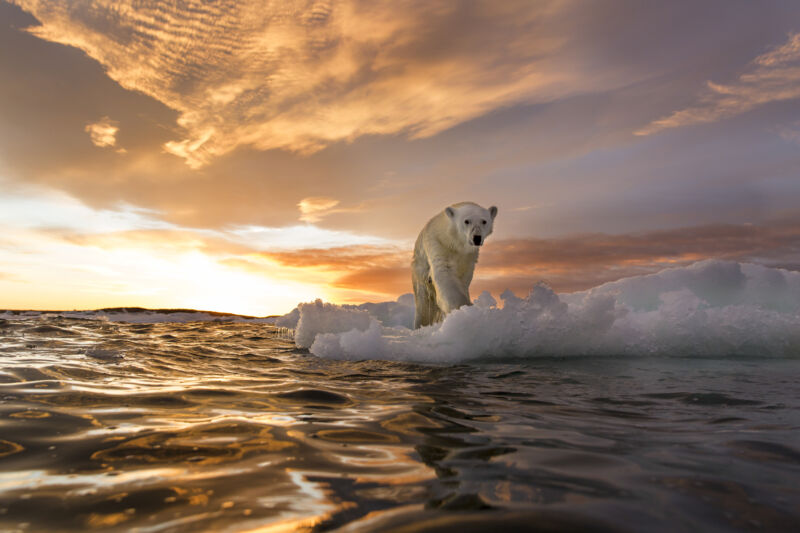Unexpected polar bear population may offer some hope for the species

Enlarge (credit: Paul Souders)
In the southeast corner of Greenland, scientists have discovered an unexpected population of polar bears. This population has developed distinct habits to survive in its odd-as far as polar bears are concerned-habitat, and the bears' genomes are quite different from many of their kin. Beyond the novelty these animals represent, they could also help inform scientists about how more traditional bears will fare in a warming Arctic, according to new research.
Several things set this group of bears apart. For much of the year, they survive by hunting from ice that falls into the ocean after breaking off a Greenland glacier; the ice floats in the fjords these bears call home. This is unlike most other populations of polar bears, which require sea ice for hunting. According to the World Wildlife Fund, between 22,000 and 31,000 polar bears are left in the world.
The research team used seven years of data collected in the region, along with 30 years of historic data. For the new data, the team connected with local hunters and used tissue samples taken from the hunters' kills to sequence the bears' genomes. They also used fieldwork, satellite data-which also allowed them to study the geographical and sea ice conditions of the region-and tracking collars to get a sense of the bears' movements.
Read 10 remaining paragraphs | Comments